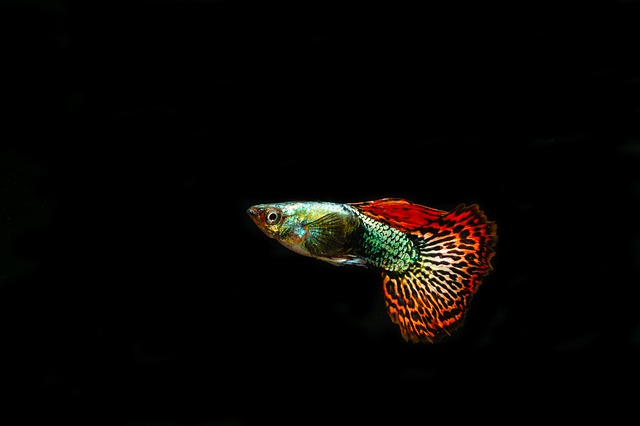Poecilia Libestes Reticulata, a fish commonly known as the Guppy, is a very popular aquarium fish. It is particularly suitable for novice aquarists since it is easy to keep and non-aggressive.

The Guppy belongs to the livebearer group and will give birth to free swimming fry instead of laying eggs. The Guppy originates from fresh and brackish waters in South and Central America, but can be found today in other places of the world as well. The Guppy has been deliberately set free in several Asian waters in an attempt to combat malaria by decreasing the number of mosquitoes.
HOW TO TAKE CARE OF THEM???
So now we are going to tell how to take care of them.
1.CHOOSE A IDEAL HABITAT.
Ideally, your tank will be 10 gallons (37.9 L) in volume. You don’t want to overcrowd your tank. If you have a 10-gallon tank.
Some guppy breeders may say you that you don’t have 10 gallon aquarium, although you don’t need these but for healthy fish it’s recommended by us although the number fishes multiply faster on tanks that are large.
2.DECHLORINATE THE WATER
There are a few ways you can dechlorinate your water. You can let it sit with the lid open for about a week to let the chlorine evaporate, or you can buy a dechlorinating kit. It’s important to dechlorinate your aquarium, and any water you add to it in the future.
3.PLANT AQUARIUM PLANT
Start from the bottom—add some substrate to the bottom of the tank. Stones or gravel are a great option for guppies. Then, add in plants. You should use live plants, as they take an important part that, along with the bacterias, will help with the toxic substances. The other important thing is that the fish have somewhere to hide, as guppies like to do this
Ad space for sell

4.LIGHT YOUR TANKS
Ideally, your guppies should get about 8 hours of darkness per day. Too much more or less than this could cause deformities as they grow. You can put a light over the tank and set it on a timer to ensure your guppies get the right amount of light per day, or you can turn the light on and off manually each morning and night
5.FEED YOUR GUPPIES A SMALL AMOUNT
Rather than feeding your guppies a large amount all at once, spread their feedings out throughout the day. Try to vary what you give them each feeding. For example, you might give them live brine shrimp during one feeding, and then flake food at the next feeding.
6. CHECK YOU GUPPIES DIGESTIVE HEALTH
The tank water is a good indicator of how well the fish are thriving on their diet. If the water goes cloudy, or if there seems to be a problem with algae in your tank, you might be having some issues with your feeding.
7. CHANGE YOUR WATER ONCE EVERY WEEKS.
This will mean changing out about 25% of the water and replacing it with fresh, dechlorinated water. You will also want to use a siphon hose to reach down to the bottom of the tank and vacuum up any leftover food, or algae that might be growing on the bottom of the tank.
AD SPACE AVAILABLE

8. MONITOR GUPPIES HEALTH
While this particular species is pretty healthy, guppies may sometimes develop problems with fungus. This most commonly appears as white spots on their skin called ich. This is easily treatable with some medications you can purchase at your pet supply store.
